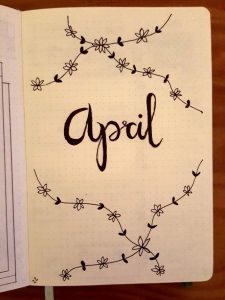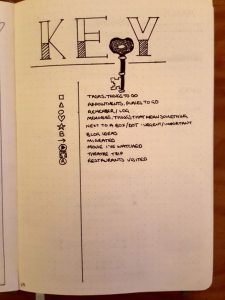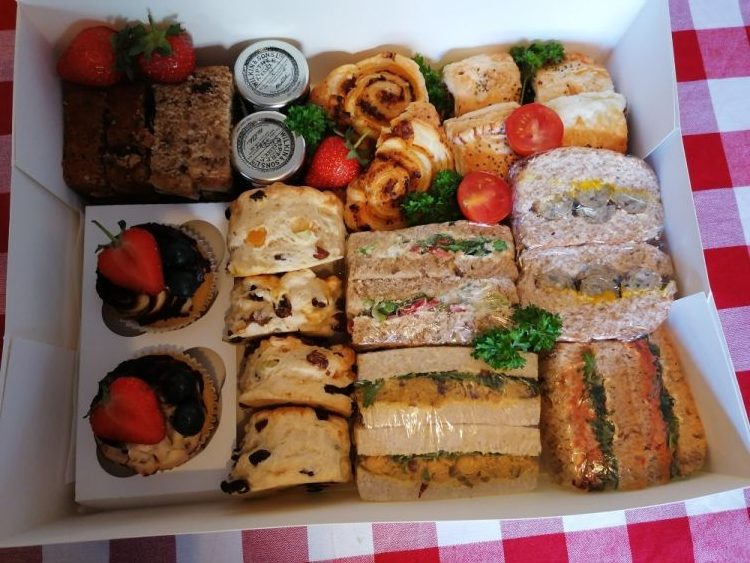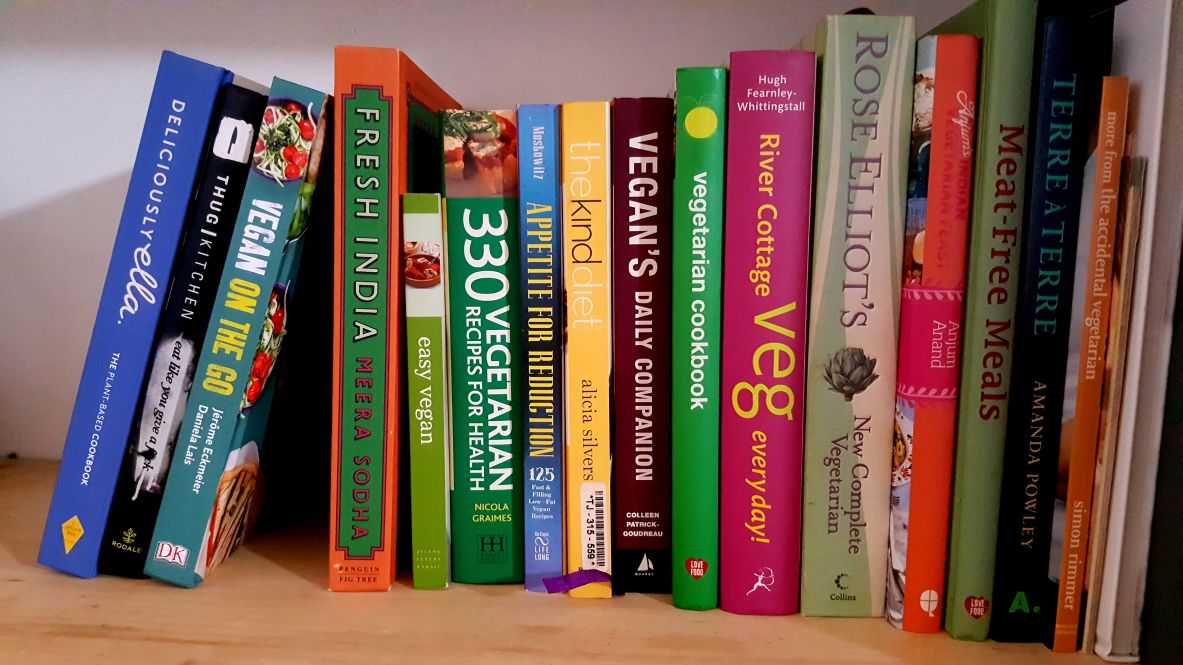BUJO for the cool kids!
I want to share a new obsession of mine… The Bullet Journal/BUJO.

http://www.bulletjournaling.co.uk
The Bullet Journal Method was originated by Ryder Carroll, a Brooklyn-based product designer. It is a journal not for your thoughts and feelings, but rather for your day to day tasks, objectives, jobs, meetings etc. It consolidates all your internal lists and endless goals and tasks into one place. These can be anything from, writing a blog post, to reading a book, to booking a table in a restaurant.
It is often referred to as ‘The Analog Method for the Digital Age’, and this also really appealed to me. We have so much going on in our every day lives; endless jobs to do, meetings, goals- we are constantly juggling information and trying to remember so much. Quite often, (if you are anything like me!) we can get overwhelmed, forgetful and end up procrastinating and not achieving what we want to. I often get to the end of the week and think about all the time I wasted and all the things I wanted to do, but never got around to.
Our brains behave differently when we turn away from our computer and phone screens and return to the simplicity of pen and paper, when we go ‘analog’. When you take the time to write, it encourages you to engage thoughtfully and decide what matters and what doesn’t, it streamlines those ‘to do lists’ and asks you to choose what is important enough to include in your journal.
One of its promises is to encourage productivity, and one of the ways it helps you achieve this, is in its constant examining of how you are using your time. At the end of each month, you review your month, and can ‘migrate’, i.e. move any unfinished tasks, or incomplete jobs to the next month. The idea is that each time you do this, you examine how likely you are to achieve that particular goal or in fact, if you even want to!
There are a set of rules you need to master, and you need to do take the time to do your research before you start. The system has been hugely successful and popular, but it works because of these unique rules. I have tried to consolidate some of the information out there to share with you the basics, if you do just these you will be well on your way. I urge you to give it a try- for me it has certainly lived up to the hype…
My Guide to getting started…
The Index Page
Unlike other diaries and planners, I have had in the past, that have reams of wasted pages, the Bullet Journal does not need to be written consecutively. In fact, it serves its purpose best when you simply write any new information on the next blank page, when you go with the flow and see where it takes you. Try different things, for example, one month you may try a sleep tracker and the next month not. You don’t save any pages or have empty sections, you write and organise, as it suits you and simply add, and then find things via the Index.
The Index is as simple as it sounds- a list of page descriptions and their corresponding page numbers so you can find what you need when you need it. It is surprising how fast you fill it up, it may seem unimportant at the start- but do not skip this section!
Year Calendar/Birthday Calendar
I decided to put my calendar for the year, at the start of my journal, along with birthdays. I wanted a simple calendar, so I could see at a glance the year ahead. This feeds into the ‘Future Log’ which will have more detail.
The Future Log
The Bullet Journal takes a focused look at one month at a time which is great for the month but we also need a way of recording all our future plans.
I am sure everyone who has been in the slightest bit interested in BUJO has googled it, or looked on Instagram and it is easy to be completely intimidated by the beautiful journals out there. Some people do make their journals look like absolute works of art. As much as you will want to make every page perfect, I think it is best to keep your journal simple. There are pages you can let your creativity shine and pages you will want to decorate, illustrate, experiment with cursive writing but the back bone of your journal should be simple, so it can be effective. As much as Instagram will show you otherwise, it is more important how your journal works, not how it looks.
The Monthly Log
I love that you don’t have to start your Bullet Journal in January. Simply begin where you are. This is where I like to be a little creative and create a pretty design for the month ahead. It is a balance between practical, simple and effective but also indulging your creative side once in a while too. So, opposite my pretty month page, is a simple table with the date on one side, and tasks/events on the other.

The Key
Your Key lists all your ‘signifiers’. Your signifiers will be the bread and butter of your Weekly and Daily Log. Again, despite your brain telling you otherwise- keep your signifiers simple. Correctly used signifiers will help you scan your pages and quickly find what you are looking for, which will certainly help when it comes to reviewing months and migrating information.
I use five main signifiers and five extras.

The Weekly/Daily Log
There are many many ways you can lay out your log, and again, the beauty of the Bullet Journal is you can change it. Week by week, month by month. So, if it doesn’t work, or you don’t like it, change it.
Remember, you are not recording everything, it is a log. It is a way of selecting the most important bits of your day and giving them the chance to become ordered. Those ‘bits’ may be practical, like tasks, meeting or appointments but also personal, like movies you have seen, restaurants you have tried or books you have finished reading.
Write your log as it comes to mind, as it evolves naturally. Our minds are scattered most of the time and our thoughts form in an unbiased order. Our brains are fascinating, but stuffed full of information, we don’t tend to categorise our own thoughts- that’s why we make lists, and why ordering in this way feels so good!
Monthly Reviews/Migration
A system I have found works for me, is taking the time to review my month at its conclusion. It is nice to look back and examine how your month went, how productive you were, what movies you watched, how many glasses of wine you consumed (maybe it’s not good all the time!).
It is also important to migrate any important or unfinished tasks/goals into the following month. This will help you decide what is important and what is not. When you migrate a task, remember to mark it somehow, a simple arrow would be enough to indicate that it’s been transferred. If you find yourself ‘migrating’ something again and again, it is worth considering if it is still important to you.
Collections
Eventually, you may move onto Collections. Collections are ‘topical’ pages in your Bullet Journal. They can be anything from books to read, shows to watch, recipes to try, favourite restaurants, date ideas, to name a few.
The Bullet Journal lets you clear out all that information that’s filling up your mind. But again, simplicity is key and it will be trial and error, until you find the system that works best for you. Remember the point of the journal and a collection, is to be useful and help you be more productive, so you don’t need to make a collection for everything, however tempting!
Collections will make themselves obvious to you as you work on your journal. You’ll know when you need one, when you start to have lots of similar information sitting on several pages and you wonder how much easier it would be if you had it all collected together on one page. I wouldn’t start with collections but evolve to include them.
Threading
I will just make quick note on threading, although I haven’t yet had the need for it, I think it will become useful as my journal progresses. Threading is a way of recording your information if it starts to fall on several non-consecutive pages. It involves numbering your pages and then adding that to your index.
For example, ‘Books to read- pages 10-12, 22, 35’. If you’re on page 10, at the bottom of that page, you will see the number 22, and know that’s the next relevant page. On page 22, you will have 35 at the bottom of it, and so on.
All you need is a notepad and a pen to give it a go…
Don’t be afraid of mistakes – keep it simple and enjoy !
Happy Journalling!





[…] The Bullet Journal Method […]